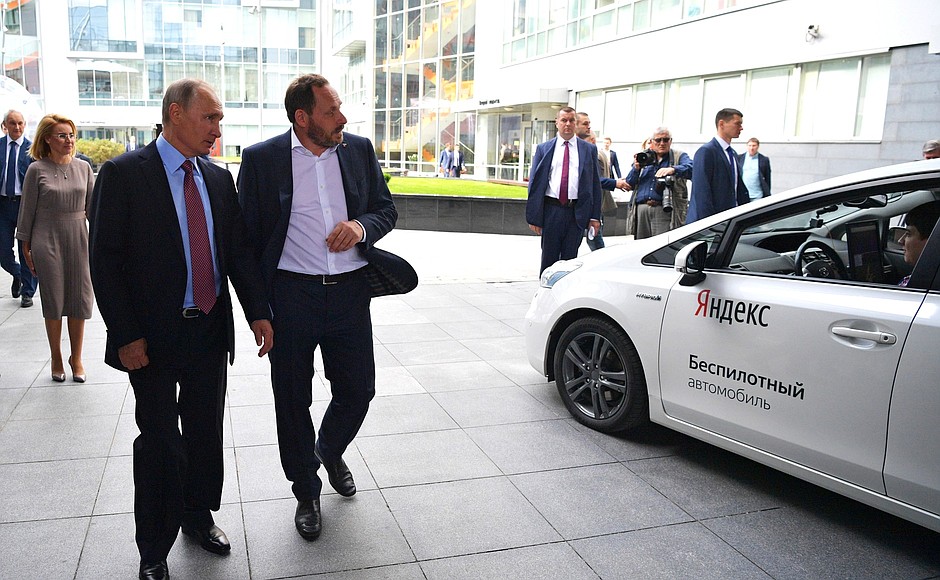
New legislation set to regulate Russia’s burgeoning driverless car market

Yandex CEO Arkady Volozh shows an autonomous Toyota Prius to Vladimir Putin, 2018
What happened
Driverless cars are not just the realm of Waymo and Uber: Russia also has several serious self-driving car projects. And in a significant development this week, the government unveiled the first draft of new legislation to regulate the sector.
- There are a handful of large Russia companies working on driverless cars, several already at a very advanced stage. The first of these is Internet giant Yandex (Google’s main competitor in the Russian-speaking online space), which has been developing driverless cars since 2016. In February, a Yandex car built on the basis of a Toyota Prius drove around Moscow, but this wasn’t pre-approved with the government. Now, Yandex is officially testing four driverless vehicles in Skolkovo and Innopolis (these are innovation clusters outside of Moscow and the Volga city of Kazan). Residents in these clusters can order driverless taxis through the Yandex.Taxi app or via a chat bot. Another player is Kamaz, the company that has produced trucks and tractors since Soviet times. Kamaz has developed a driverless minibus, Shuttle, which seats up to 12 people and will be ready to go into production in the next 2-3 years.
- The draft legislation developed by the government includes strict rules: a driver who can take control if necessary must always be at the wheel of a driverless car, the car’s dimensions and time limits for its trips should be pre-agreed with the authorities and testing will be permitted only in two locations (in Moscow and Tatarstan, a wealthy republic 500 miles east of the capital). In the last stipulation, Russia is following global best practice — at the beginning of 2018 the U.S. wanted to expand driverless car tests beyond an Arizona site but this was scuppered by a serious accident involving a driverless Uber.
- The main complaints about the draft legislation are that smaller firms are excluded: the equity capital of a company developing a driverless vehicle is required to be no less than $1.7 billion and each vehicle must be insured for almost $200,000. This will cut out dozens of smaller startups. And even a relatively large player in the market, like bus producer Volgabus, which has designed the driverless Matreshka for 8-12 passengers, will have to increase its equity capital tenfold if it wants to move forward.
Why the world should care
Russia may appear to be a commodity-driven economy, but, as any other cliche, this is superficial. Driverless car technology is alive and well in Russia. Given the poor quality of the Russian cars, though, it’s not surprising that an Internet company is leading the driverless car race — and is far ahead of the state-owned car manufacturers.




